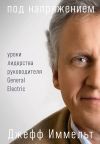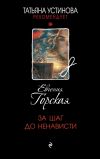
Автор книги: Виктория Варламова
Жанр: Языкознание, Наука и Образование
Возрастные ограничения: +12
сообщить о неприемлемом содержимом
Текущая страница: 1 (всего у книги 5 страниц) [доступный отрывок для чтения: 1 страниц]
Виктория Варламова
АНГЛИЙСКИЙ ЯЗЫК
Сборник практических заданий по энергетике с ответами
Санкт – Петербургское государственное бюджетное
профессиональное учреждение
АКАДЕМИЯ ПРОМЫШЛЕННЫХ ТЕХНОЛОГИЙ
В. А. Варламова
Сборник
Практических заданий по энергетике
По дисциплине: Иностранный язык в профессиональной
деятельности (Английский язык)
для специальности среднего профессионального образования
13.02.11 Техническая эксплуатация и обслуживание электрического
и электромеханического оборудования (по отраслям)
В соответствии с Рабочей программой № ОГСЭ.03 ИНОСТРАННЫЙ ЯЗЫК
В ПРОФЕССИОНАЛЬНОЙ ДЕЯТЕЛЬНОСТИ
Санкт – Петербург
2020 год
Рассмотрено и одобрено УЦК
«Иностранный язык»
Протокол № 1 от 13.01.2021 г.
Согласовано с методическим советом
СПб ГБПОУ «Академия промышленных технологий»
Протокол № 4 от 12.02.2021 г.
Автор:
Варламова Виктория Антоновна
Преподаватель высшей категории СПб ГБПУ «АПТ»
Рецензенты:
Мишина Анна Владимировна
к. п. н. Преподаватель СПб ГБПУ «АПТ»
Пояснительная записка
Сборник Практических заданий по дисциплине: «Иностранный язык в профессиональной деятельности (Английский язык)» составлен в соответствии с Рабочей программой № ОГСЭ.03 «ИНОСТРАННЫЙ ЯЗЫК В ПРОФЕССИОНАЛЬНОЙ ДЕЯТЕЛЬНОСТИ» и предназначен для учащихся обучающихся по специальности: 13.02.11 «Техническая эксплуатация и обслуживание электрического и электромеханического оборудования (по отраслям)» для обучения специальности среднего профессионального образования.
Пособие рассчитано на один семестр и включает лексико – грамматический материал, указанный в разделах Рабочей программы № ОГСЭ.03 «ИНОСТРАННЫЙ ЯЗЫК В ПРОФЕССИОНАЛЬНОЙ ДЕЯТЕЛЬНОСТИ» по темам:
Цель пособия обеспечивает формирование профессиональных и общих компетенций по всем видам деятельности ФГОС по специальности 13.02.11.
Задачей пособия также является – развивать у учащихся навыки чтения и перевода профессионально – ориентированных текстов, извлечения, переработки и передачи информации на английском языке.
Пособие состоит из девяти учебных тем. Пособие рассчитано на 32 учебных часа, включает также материалы по Контрольной проверочной работе за семестр.
Материал к каждому занятию содержит тексты для чтения и перевода, лексические упражнения для введения и отработки лексики по теме и грамматический материал с закрепляющими упражнениями. Грамматические темы идут в соответствии с Рабочей программой и включают упражнения на:
• Словообразование. «Суффиксы существительных» «Суффиксы прилагательных.»
• Времена группы Simple Active / Simple Passive
• Порядок слов в повествовательном и вопросительном предложениях.
Учебный материал содержит тестовые упражнения, которые можно использовать для самостоятельной проверки знаний учащимися.
Ответы по упражнениям
Тема 1. Энергия. Виды энергии. Закон сохранения энергии
1.1. Найдите и запишите перевод терминов:
Ответы:
| 1. ability | c) способность |
| 2. heat energy | d) тепловая энергия |
| 3. a velocity of light | f) скорость света |
| 4. a equation | a) формула, выражение |
| 5. infrared radiation | g) инфракрасное излучение |
| 6. wave motion | i) движение волн |
| 7. enormous amounts | e) огромное количество |
| 8. nuclear fission | b) ядерный распад |
| 9. moving object | h) движущийся объект |
| 10. emission | k) испускание, эмиссия |
| 11. the absence of matter | z) отсутствие вещества |
| 12. translation energy | l) поступательная энергия |
1. 2. А. Переведите существительные, образованные от глаголов
Ответы выделены полужирным курсивом:
1. to move (двигать) – motion (движение)
2. to accelerate (ускорять) – acceleration (ускорение)
3. to radiate (излучать) – radiation (излучение)
4. to conduct (проводить) – conduction (проведение)
5. to press (давить) – pressure (давление)
6. to react (реагировать) – reaction (реакция)
7. to conserve (сохранять) – conservation (сохранение)
8. to revolve (вращать) – revolution (вращение)
В. Переведите исходный глагол, зная перевод существительного, образованного от глагола.
1. to define (определять) – definition (определение)
2. to classify (классифицировать) – classification (классификация)
3. to conduct (проводить) – conduction (проведение)
4. to generate (вырабатывать) – generation (выработка)
5. to combust (воспламенять) – combustion (воспламенение)
6. to convert (преобразовывать) – conversion (преобразование)
7. to produce (производить) – production (производство)
8. to fuse (синтезировать) – fusion (синтез, соединение)
1.3. Выберите правильный вариант перевода:
Ответы выделены полужирным курсивом:
| 1. radiant energy | В) энергия излучения |
| 2. elastic potential energy | В) энергия упругости |
| 3. visible light | А) видимый свет |
| 4. the absence of matter | В) (зд.) Отсутствие материи/вещества |
| 5. the molecules of a substance | А) молекулы вещества |
1.4. Найдите существительное в каждой группе слов. Переведите.
Ответы выделен полужирным курсивом.
a) electric, kinetic, to consist of, to accelerate, motion;
b) chemical, normal, electrical, thermal, energy;
c) to classify, to modify, to destroy, velocity, to multiply;
d) longitudinal, mathematical, gravitational, to multiply, equation;
e) to produce, to emit, emission, to change, enormous;
f) to convert, convertible, interconvertible, rotational, pressure;
g) totally, periodically, usually, to conduct, conservation.
1.5. Прочитайте и переведите текст
Text: “Energy”.
Energy can be defined as the ability to do work. Physicists classify energy into several types: kinetic, potential, heat, sound, radiant energy (light, for example), and electrical, chemical, and nuclear energy.
Kinetic energy is possessed by a moving object by virtue of its motion. It equals the work done to accelerate the object to a particular velocity; it also equals the work done to bring a moving object to rest..
An object has potential energy by virtue of its position. Two common types are gravitational and elastic potential energy.
An object possesses (обладает) heat, or thermal, energy by virtue of its temperature. It is, in fact, merely a form of kinetic energy, because the temperature of a substance depends on the motion of its component atoms or molecules; the higher its temperature, the faster the molecules move.
Radiant energy consists of electromagnetic radiation and includes radio waves, visible light, ultraviolet and infrared radiation, and X rays. The only form of energy that can exist in the absence of matter, it consists of a wave motion in electric and magnetic fields.
Sound energy consists of moving waves of pressure in a medium such as air, water, or metal. They consist of vibrations in the molecules of the medium.
Matter that has gained or lost some electric charge has electrical energy. The movement of charges constitutes an electric current, which flows between two objects at different potentials when they are joined by a conductor.
Chemical energy is possessed by substances that undergo a chemical reaction, such as combustion. It is stored in the chemical bonds between the atoms that make up the molecules of a substance.
Nuclear energy is produced when the nuclei of atoms change, either by splitting apart or joining together. The splitting process is known as nuclear fission, the joining together as nuclear fusion. Such changes can be accompanied by the release of enormous amounts of energy in the form of heat, light, and radioactivity (the emission of atomic particles or gamma radiation, or both).
The principle of conservation of energy
The total amount of energy, possessed by an object, remains the same. This phenomenon is the principle of conservation of energy, which states, that energy can neither be created nor destroyed, but only converted into other forms.
If mass and energy are considered together, the total amount of mass and energy remains the same. The principle of mass conservation has been modified into what is called the principle of conservation of mass – energy. The Theory of Relativity shows that mass and energy can be considered to be totally interconvertible, and the amount of energy produced, when matter is destroyed, is given by the well – known equation E = mc2 (E is the energy released, m is the mass destroyed, and c is the velocity of light).
1.6. Составьте предложения по образцу:
Ответы выделены полужирным курсивом.
Pattern 1. Physicists classify energy into several types: kinetic, potential, heat, sound, radiant, electrical, chemical and nuclear energy.
Физики классифицируют энергию на несколько типов: кинетическую, потенциальную, тепловую, звуковую, энергию излучения, электрическую, химическую и ядерную.
1. Physicists classify physical science into several fields: mechanics, sound, heat, electricity, etc.
2. Physicists classify particles into several types: electrons, protons, neutrons, etc.
3. Physicists classify states of matter into several types: solid, liquid, gas, plasma
4. Physicists classify solids into two types: “true” and amorphous.
5. Physicists classify substances in solution into two types: crystalloids and colloids
Pattern 2. The two principal forms of kinetic energy are known as translation and rotational. Две основные формы кинетической энергии известны как поступательная и вращательная
1. The two branches of physics are known as experimental and theoretical physics.
2. The four states of matter are known as solid, gas, liquid and plasma.
3. The three principal types of forces are known as gravitational, friction and viscous forces.
4. The two principal types of substances in solution are known as colloids and crystalloids.
5. The two types of solids are known as “true” and amorphous
Pattern 3. Kinetic energy is possessed by an object by virtue of its motion. Кинетической энергией обладает объект в силу своего движения.
1. Rotational energy is possessed by an object by virtue its revolution about an axis.
2. Potential energy is possessed by an object by virtue its position.
3. Heat energy is possessed by an object by virtue its temperature.
4. Electrical energy is possessed by an object by virtue its gaining or losing some electric charge.
5. Chemical energy is possessed by an object by virtue the chemical reaction.
1.7. Найдите предложение, содержание которого не соответствует теме и смыслу текста.
Ответы выделен полужирным курсивом
1. Physicists classify energy into several types: kinetic, potential, heat, sound, radiant energy and electrical, chemical and nuclear energy.
2. Sound can be considered as a special form of kinetic energy.
3. The splitting process is known as nuclear fission.
4. Some companies produce devices that are already powered by solar energy.
5. Chemical energy is possessed by substances that undergo a chemical reaction, such as combustion
1.8. Найдите перевод терминов из текста
1. gravitational energy
2. kinetic energy
3. heat energy
4. radiant energy
5. electrical energy
6. chemical energy
7. nuclear energy
8. electric and magnetic fields
9. to exist in the absence of matter
10. испускают избыточную энергию в виде излучения release of enormous amounts of energy in the form of heat, light, and radioactivity
11. vibrations in the molecules of the medium
12. приобретать или терять электрический заряд
13. an electric current
14. the principle of conservation of energy
1.9. Переведите выражения из текста на русский язык письменно
1. the ability to do work ____________________________________________
2. to classify energy _________________________________________________
3. by virtue of its motion __________________________________________
4. to accelerate the object to a particular velocity ________________________
5. the temperature depends on the motion ___________________________
6. ultraviolet radiation _____________________________________________
7. visible light ____________________________________________________
8. the movement of charges _________________________________________
9. nuclear fission ___________________________________________________
10. nuclear fusion ___________________________________________________
11. the emission of atomic particles _____________________________________
1.10. Заполните пропуски терминами, данными в конце упражнения
1. Energy can be defined as the _____ to do work.
2. Kinetic energy is possessed by a _____ object by virtue of its motion.
3. Sound energy consists of moving waves of _____ in a medium such as air, water, or metal.
4. The movement of charges constitutes an _____ _____, which flows between two objects at different potentials when they are joined by a _____.
5. The splitting process is known as nuclear _____, the joining together as nuclear _____.
_____________________________________________________________________
Pressure; ability; moving; fission; fusion; conductor; electrical energy.
1.11. Дайте ответы на вопросы по теме:
1. What is energy?
2. What types of energy do you know?
3. Is kinetic energy possessed by a moving object by virtue of its motion?
4. When is radiant energy emitted?
5. What does sound energy consist of?
6. When has matter electrical energy?
7. What energy is released in chemical reactions?
8. When is nuclear energy produced?
9. What phenomenon is called the principle of conservation of energy?
10. What does the Theory of Relativity show?
1.12. Переведите предложения на русский язык письменно.
1. Physicists classify energy into several types: kinetic, potential, heat, sound, radiant energy and electrical, chemical, and nuclear energy.
2. The two principal forms of kinetic energy are known as translational (поступательная энергия) and rotational(энергия вращения).
3. An object possesses heat, or thermal energy by virtue of its temperature.
4. Radiant energy consists of electromagnetic radiation and includes radio waves, visible light, ultraviolet and infrared radiation, and X-rays.
5. Chemical energy is possessed by substances that undergo a chemical reacton, such as combustion.
6. The splitting process is known as nuclear fission, the joining together as nuclear fusion.
7. The principle of conservation of energy states that energy can neither be created nor destroyed but only converted into other forms.
8. Four properties of a wave can be distinguished and described mathematically: wavelength, frequency, velocity and amplitude.
Тема 2. Звуковая энергия
2.1. Найдите перевод терминов.
| 1. waves of alternate compression | а) волны с чередующимся сжатием |
| b) продольные волны | |
| 2. longitudinal waves | c) постоянная скорость |
| 3. transverse waves | d) среда |
| 4. human throat | e) голосовые связки |
| 5. constant velocity | f) горло человека |
| 6 medium | g) поперечные волны |
| 7. frequency range | h) частотный диапазон |
| 8. vocal cords | i) разрежение, ослабление |
| 9. wavelength | j) длина волны |
| 10. rarefaction | k) уменьшать |
| 11. to increase | l) увеличивать |
| 12. to decrease |
2.2. Переведите однокоренные слова:
| Существительные | Глаголы |
| 1. origin (? _____) | to originate (происходить) |
| 2. compression (сжатие) | to compress (? _____) |
| 3. conversion (? _____) | to convert (преобразовывать) |
| 4. direction (направление) | to direct (? _____) |
| 5. transmission (? _____) | to transmit (передавать) |
| 6. propagation (распространение) | to propagate (? _____) |
| 7. expansion (? _____) | to expand (расширяться) |
2.3. Прочитайте и переведите текст:
Text: Sound Еnergy.
Energy may take various forms – sound, chemical, and electrical energy, for example Sound consists of waves of alternate compression and rarefaction that transmit kinetic energy through a medium. If there is no medium, there is no sound; sound waves cannot pass through a vacuum. All sounds originate from vibrating objects, such as the vocal cords in the human throat, the skin of a drum, or the strings of a violin. The vibrations are then passed on through a medium – most commonly air – until they strike the ear drum; the ear converts the vibrations into nerve impulses, which pass to the brain where they are interpreted as sounds. Microphones are the other most common instruments of sound waves into electrical signals.
Waves and sound. There are two types of waves in physics: longitudinal and transverse. Sound waves are of the longitudinal type – that is, their vibrations take place in the same direction as they travel.
Transverse waves are those in which the vibrations occur at right angles to the direction, in which the waves travel – as happens, for example, when a length of rope is moved regularly up and down to give it a wavelike appearance. Ocean waves and light waves also travel by transverse propagation.
Frequency and intensity. The frequency of a sound wave is the number of wavelengths that are completed in a given period of time. The universal unit of measurement is the hertz (Hz), which represents one complete wavelength, or cycle, per second. The human ear is sensitive to sound in the frequency range from about 20 Hz. As people grow older, their ability to perceive high frequencies diminishes.
The intensity of sound is measured in terms of the amount of power that passes each second through a given area perpendicular to the direction of the sound wave. The intensity unit is the decibel (db).
Velocity. Sound can be transmitted by any medium – gas, liquid, or solid – and all sound waves travel at a constant velocity through any given medium at a constant temperature. But depending on their elasticity and density, some mediums transmit waves faster than others.
The velocity of sound is affected by temperature; as the temperature increases, the medium expands. Its density decreases, with the result that the velocity of sound increases.
2.4. Найдите предложение, содержание которого не соответствует теме и смыслу текста.
1. A sound wave consists of a series of alternate compressions and rarefactions of the medium through which it passes.
2. Waves of alternate compression and rarefaction transmit kinetic energy through a medium.
3. As people grow older, their ability to perceive high frequencies diminishes
4. There are two types of waves in physics: longitudinal and transverse.
5. Solar energy is an alternative source of energy.
2.5. Найдите перевод словосочетаний на английский язык в тексте:
1. кожа барабана ________________________________________________
2. струны скрипки ______________________________________________
3. продольная волна ____________________________________________
4. человеческое ухо _____________________________________________
5. постоянная температура ______________________________________
6. эластичность и плотность ____________________________________
7. частотный диапазон __________________________________________
8. частота звуковой волны ______________________________________
9. скорость звука ________________________________________________
10. плотность среды _____________________________________________
11. частота звука ________________________________________________
2.6. Вставьте в пропуски предлоги: through/in/from, где необходимо.
1. Sound waves cannot pass _______ a vacuum.
2. All sounds originate _______ vibrating objects.
3. The vibrating objects are then passed on _______ a medium.
4. Frequency can be measured _______ physically.
5. The human ear is sensitive to sound _______ the frequency range ______ about 20 Hz.
6. The intensity of sound is measured _______ terms of the amount of power.
__________________________________________________________________
Through – сквозь/через; in – в; from – от;
__________________________________________________________________
2.7. Дайте ответы на вопросы по тексту:
1. What originates from vibrating objects?
2. How can all living beings hear sounds?
3. What are the types of waves in physics?
4. What is intensity of sound?
5. How does sound depend on medium and temperature?
2.8. Переведите предложения на русский язык письменно:
1. A sound wave consists of a series of alternate compressions and rarefactions of medium.
2. Alternate compression and rarefaction transmit kinetic energy through a medium which they pass.
3. Sound can’t pass through a vacuum.
4. Vocal cords in human throat, the skin of a drum or the strings of a violin are good examples of vibrating objects.
5. Each complete wave cycle is made up of one compression and one rarefaction.
Тема 3. Энергия излучения
3.1. Найдите перевод терминов
| 1. nature and properties | a) волновое движение |
| 2. electromagnetic radiation | b) среда |
| 3. wave motion | c) плотность среды |
| 4. medium | d) двоичная природа |
| 5. density of the medium | e) природа и свойства |
| 6. dual nature | f) общие характеристики |
| 7. common characteristics | g) электромагнитная радиация/излучение |
| 8. “particles,” or quanta | h) вакуум космоса |
| 9. vacuum of space | i) волны разной длины |
| 10. gamma rays | j) «частицы» или кванты |
| 11. different wavelengths | k) гамма лучи |
| 12. visible and infrared light | l) видимый и инфракрасный свет |
| 13. transparent | |
| 14. constant velocity |
3.2. Найдите прилагательное в каждой группе слов. Переведите
a) frequency, velocity, activity, visible, density;
b) to travel, to vary, nature, natural, naturally;
c) wavelength, field, fundamental, vacuum, ray;
d) medium, photon, to emit, density, magnetic;
e) speed, space, various, to consist of, molecule;
f) air, metal, ray, constant, frequency, velocity;
g) radiation, to call, electromagnetic, slowly, wave;
3.3. Прочитайте и переведите текст:
Text: “Radiant Energy”.
Energy may take various forms – sound, chemical, and electrical energy, for example.
Nature and properties of radiant energy. The various forms of radiant energy have many common characteristics, the most fundamental of which concerns their nature. They are all wave motion, consisting of varying electric and magnetic fields, but they can also be considered as being made up of “particles,” or quanta, of energy called photons. Radiant energy therefore has a dual wave/particle nature. The most important forms of electromagnetic radiation are visible and infrared light for the life.
Another basic characteristic of electromagnetic radiation is the fact that it does not need a medium in which to travel, and so it can travel through vacuum of space. But the various forms of radiation can also travel through other mediums: light travels through air, water, and glass, for example, and even pass through metal; that is to say, even a metal is “transparent” to X-rays and gamma rays.
In a vacuum, all forms of electromagnetic radiation travel at the same constant velocity – called the speed of light. In other transparent mediums, they travel more slowly, the velocity depending on the wavelength of the radiation and, generally, on the density of the medium. In other mediums, different wavelengths travel at slightly different velocities. The longer the wavelength, the faster the radiation travels. So in the case of visible light, red light travels faster than blue light in any particular transparent medium does.
The various types of radiant energy have different wavelengths and frequencies. These two characteristics multiplied by the frequency are equal to the velocity. Because the velocity is constant in any particular medium, wavelength and frequency are inversely proportional to each other; the longer the wavelength, the lower the frequency is, and vice versa.
3.4. Найдите предложение, содержание которого не соответствует теме и смыслу текста.
1. Energy may take various forms – sound, chemical and electrical energy, for example.
2. The various forms of radiant energy have many common characteristics, the most fundamental of which concerns their nature.
3. Another basic characteristic of electromagnetic radiation is the fact that it does not need a medium in which to travel.
4. In a vacuum all forms of electromagnetic radiation travel at the same constant velocity.
5. You can buy an air conditioner which work without electricity.
3.5. Найдите перевод этих предложений в тексте.
1. Энергия может быть различных форм, например: звуковая, химическая электроэнергия и др.
2. Самыми важными формами электромагнитного излучения являются видимый свет и инфракрасное излучение для жизни
3. Различные формы энергии излучения имеют много общих свойств.
4. Теоретически возможно объяснить все свойства энергии излучения с помощью понятий «волновое движение» и «фотон».
5. Волновое движение – это одна из форм радиоактивной энергии.
6. Различные формы излучения могут проходить через другую среду.
7. Свет проходит через воздух, воду, стекло.
8. Даже металл «прозрачен» для Рентгеновских и гамма лучей.
3.6. Переведите выражения из текста на русский язык
1. various forms of radiation _______________________________________
2. wavelengths and frequencies ____________________________________
3. the same constant velocity ______________________________________
4. infrared and visible light ________________________________________
5. common characteristics _________________________________________
6. particular medium _____________________________________________
7. the speed of light _______________________________________________
8. density of the medium __________________________________________
3.7. Вставьте пропущенные слова. Используйте подсказку:
1. The various types of radiant energy have different wavelengths and f________.
2. The most important form of electromagnetic radiation is v________ light.
3. The most fundamental radiant energy characteristics d________ on their nature.
4. Various forms of radiation can also travel through other m________.
5. All forms of electromagnetic radiation travel at the same constant v________.
6. Radiant energy therefore has a dual wave/particle n________.
7. The velocity depends on the wavelength and the d________ of the medium.
3.8. Переведите. Определите, какие предложения правдивые, в каких дана ложная информация исходя из содержания текста:
1. Energy may take only two forms – sound and electrical energy.
2. Metal is “transparent” to X-rays and gamma rays
3. Only X rays and gamma rays have found practical application.
4. The velocity is constant in any particular medium
5. Light travels through air, water and glass.
6. In a vacuum all forms of electromagnetic radiation don’t travel at all.
7. The speed of light varies greatly in the air and in a vacuum.
8. The various types of radiant energy don’t have wavelengths and frequencies.
3.9. Дайте ответы на вопросы по тексту:
1. What is known as radiant energy?
2. Why do the various forms of radiant energy have many common characteristics?
3. What is called the speed of light?
4. What can you say about the speed of light in the air and in a vacuum?
3.10. Переведите предложения по теме на русский язык письменно.
1. Energy takes various forms – sound and electrical energy, for example.
2. The range of related forms is known as radiant energy or electromagnetic radiation.
3. Electromagnetic radiation can traverse the vast emptiness of space.
4. Only visible light, radio waves and some infrared and ultraviolet radiation can penetrate the earth’s atmosphere.
5. But the various forms of radiation can travel through other mediums: light travel through air, water, glass, and X rays, gamma rays can penetrate body tissues and even pass through metal.
Внимание! Это не конец книги.
Если начало книги вам понравилось, то полную версию можно приобрести у нашего партнёра - распространителя легального контента. Поддержите автора!Правообладателям!
Данное произведение размещено по согласованию с ООО "ЛитРес" (20% исходного текста). Если размещение книги нарушает чьи-либо права, то сообщите об этом.Читателям!
Оплатили, но не знаете что делать дальше?








































